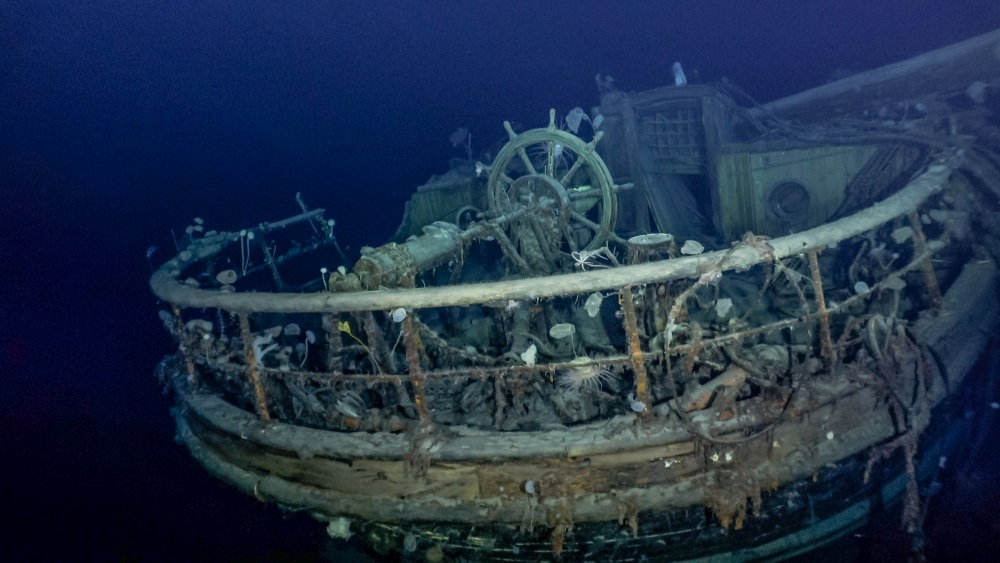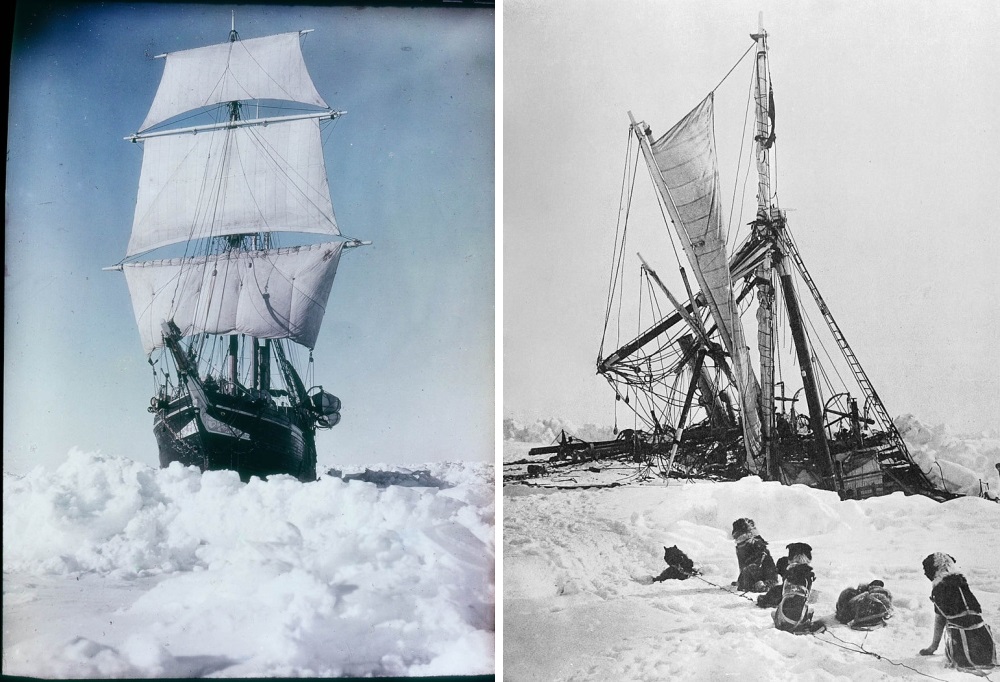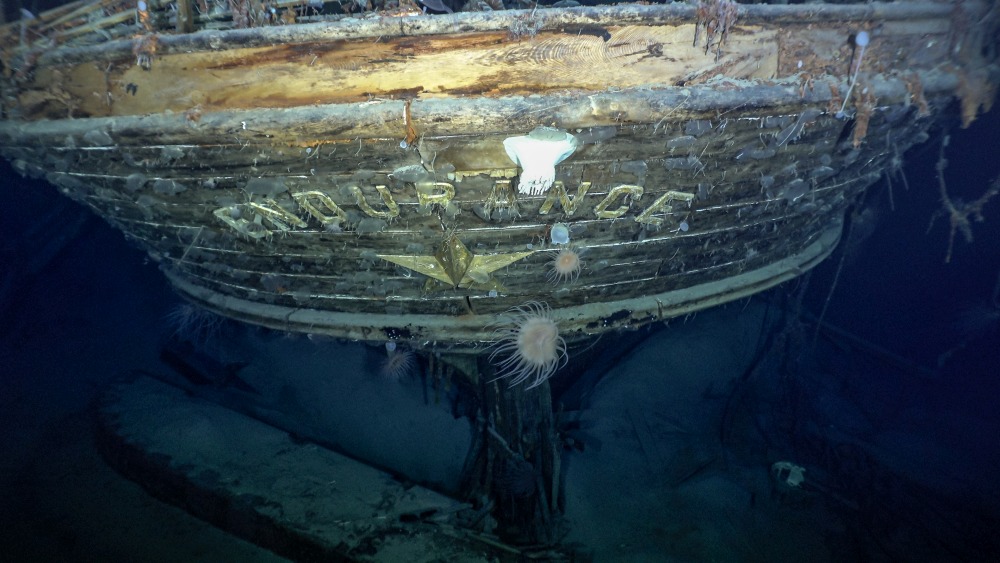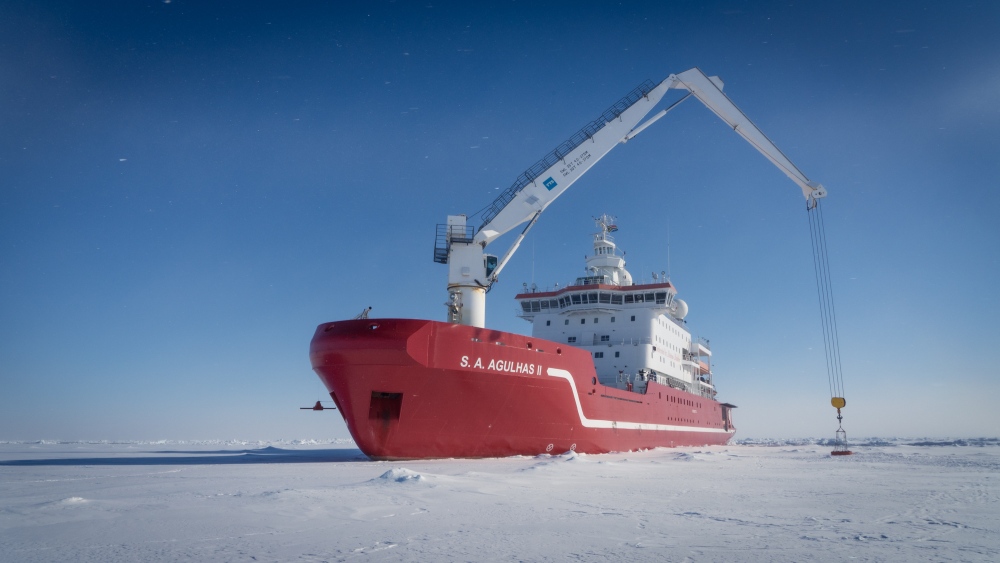The exact location of the Endurance was one of the greatest maritime mysteries. But now, after more than a century, the legendary shipwreck has been found.

The Endurance was finally found after more than 100 years. Image credit: Falklands Maritime Heritage Trust / National Geographic
The Endurance was built in Norway, and completed in December 1912. Even though she may look like any ordinary wooden ship, the Endurance was carefully designed for polar conditions with a very durable construction. The 144 feet (44 meters) long vessel was arguably the strongest wooden ship built at the time of her launch in 1912.
Originally, her purpose was to provide accommodation for wealthy tourists and hunting parties traveling to the Arctic. But from 1914 she was used for expedition purposes under the ownership of Sir Ernest Shackleton. Shackleton’s goal was to accomplish the first land crossing of Antarctica from the Weddell Sea through the South Pole to the Ross Sea. He named the mission the Imperial Trans-Antarctic Expedition, which later became known as the last major expedition of the Heroic Age of Antarctic Exploration.

The Endurance, as she’s trying to break through pack ice in the Weddell Sea (right), and her final sinking in 1915 (right). Image credit: Frank Hurley & Royal Grographic Society
The expedition never accomplished its objective, and it also marked the last journey of the Endurance. In 1915, the ship became trapped in dense pack ice. The ice eventually crushed the Endurance, forcing her crew to abandon the massive wooden ship. Shackleton and his team had to make an astonishing escape: they spent months in makeshift camps in the literal middle of nowhere until they made an attempt to reach the inhospitable and uninhabited Elephant Island with lifeboats. Their daring escape was fraught with peril: the island was 800 miles (1300 kilometers) from their position, and the journey had to be taken in temperatures as low as −20 °F (−29 °C), with only small amounts of food at their disposal. Miraculously, they made it to Elephant Island, and from there, Shackleton and two of his men were able to cross to the whaling station on the mountainous island, Stromness. Shackleton sent for the other men still on Elephant Island, and against all odds, all members of his crew returned home alive.
But as for wreck of the Endurance, it sank into the ocean after months of being crushed by the ice. By the next day, the ice around the spot where she had sunk had moved together again, covering any trace of the wreck. Her crew fixed the Endurance’s last position at 68° 38.5’S 52° 58’W, but her final resting place wasn’t found for over a century, despite several search attempts over the years.
After 107 years, on 5 March 2022 the Endurance22 expedition, launched by the Falklands Maritime Heritage Trust, was able to locate the legendary shipwreck of the Endurance at a depth of 10,000 feet (3000 meters) in the Weddell Sea, 4 miles (6,4 kilometers) south of her last location, recorded by her former crew. Footage of the wreck shows that the ship has been preserved in very good condition – as if it had sunk only yesterday. The team of researchers expected the Endurance to be in a relatively good condition, but they didn’t anticipate it to be this well preserved.
“This is by far the finest wooden shipwreck I have ever seen. It is upright, well proud of the seabed, intact, and in a brilliant state of preservation. (…) This is a milestone in polar history.” – said Mensun Bound, Director of Exploration. Indeed, her hull is still largely intact (although the timber has been disrupted at some places), and the Endurance lettering is clearly visible on the back.
Why the ship stayed in such good shape for over a century? Because cold water temperatures can act as a very effective preservative, and given the lack of trees in the Antarctic region, there weren’t any wood-eating organisms around that could have munched on the sunken ship.

The name – Endurance – is clearly visible on the stern. Image credit: Falklands Maritime Heritage Trust / National Geographic
The Endurance22 expedition set off from Cape Town, one month after the 100th anniversary of Shackleton’s death. The expedition lasted for 2 weeks and was operated from the South African icebreaker, Agulhas II. Equipped with sonar and remotely operated submersibles, scientists were scanning the seafloor until they located the wreck. Once the Endurance was found, they swapped the equipment on the submersibles for high-resolution cameras and other scientific instruments to make detailed images and scans.
Dr. John Shears, the leader of the expedition, described the mission as the most difficult shipwreck search, due to the constantly shifting sea-ice, blizzards, and temperatures dropping down to -0.4 °F (-18 C°).
“We have achieved what many people said was impossible,” – he said.

The expedition was operated from the South African icebreaker, Agulhas II. Image credit: Falklands Maritime Heritage Trust / National Geographic
Under the international Antarctic Treaty, the wreck of the Endurance is considered a historical monument, and must not be disturbed. Not even the submersibles touched it, and no artifacts have been brought to the surface.
After the expedition, the Agulhas II headed back to its home port of Cape Town, but also stopped in British Overseas Territory, on the island of South Georgia, where Shackleton is buried.
“We will pay our respects to ‘The Boss’,” said Dr. Shears, referring to Shackleton’s nickname, once used by the Endurance crew.

